First Look: Sprindex's Adjustable-Rate Coil Spring
Sprindex's new adjustable-rate coil spring system lets riders alter their spring-rate without needing to swap out coils or even reach for any tools. Instead, all you need to do is rotate the Sprindex collar by hand to add or subtract as much as 30 to 60 lb/in to the spring rate. It also consists of only a few extra parts, making it dead-simple to boot.
The design uses a proprietary steel coil spring, with three different overall lengths available to fit shock stroke lengths of up to 2.2 (XC), 2.6 (EN), and 3.0'' (DH) in length, and 290 lb/in to 610 lb/in coils are available. Thin Delrin adapters are used to adapt the coils to every major suspension brand's shocks, and all three models sell for $140 USD direct from Sprindex's website or your local shop.
The design uses a proprietary steel coil spring, with three different overall lengths available to fit shock stroke lengths of up to 2.2 (XC), 2.6 (EN), and 3.0'' (DH) in length, and 290 lb/in to 610 lb/in coils are available. Thin Delrin adapters are used to adapt the coils to every major suspension brand's shocks, and all three models sell for $140 USD direct from Sprindex's website or your local shop.
Sprindex Details
• Adjustable-rate coil spring
• Material: Glass-reinforced polymer
• Provides approx. 30 - 60 lb/in adjustment range (depends on model)
• 290 - 610 lb/in spring-rate options
• Compatible w/ Fox, RockShox, DVO, MRP, Marzocchi, Cane Creek, Öhlins, RockShox, X-Fusion, and Push shocks
• Weight: 389-grams (2.6" EN, 350-380 lb/in)
• MSRP: $140 USD
• More info: www.sprindex.com
• Adjustable-rate coil spring
• Material: Glass-reinforced polymer
• Provides approx. 30 - 60 lb/in adjustment range (depends on model)
• 290 - 610 lb/in spring-rate options
• Compatible w/ Fox, RockShox, DVO, MRP, Marzocchi, Cane Creek, Öhlins, RockShox, X-Fusion, and Push shocks
• Weight: 389-grams (2.6" EN, 350-380 lb/in)
• MSRP: $140 USD
• More info: www.sprindex.com
Tool-free coil spring-rate adjustment? You betcha.
If coils are so great, why aren't we all using them?
Given the popularity of coil-sprung suspension these days, along with the undeniable benefits of less friction and more traction, isn't it a bit odd that the vast majority of full-suspension mountain bikes come with air shocks? I mean, if these coils truly are better, why aren't they spec'd on all of our bikes? There's the fact that air is lighter than steel, but it's mainly because an air shock is far more adjustable. Using only a shock pump, a shop can have any of its air-sprung full-suspension bikes work for potential customers who weigh 100 pounds or potential customers who weigh three times as much.
As you can imagine, that makes it a whole lot easier to sell those bikes, and the shop doesn't need to keep dozens and dozens of different coil springs on hand.
The air shock on the bottom weighs 520-grams, while the coil-sprung shock in the exact same length, and with the Sprindex unit installed, weighs 861-grams.
Dialing back the cynicism a notch or three, you wouldn't be wrong if you also said that dead-simple spring-rate adjustment is air suspension's greatest asset. If you want just a nip less sag, all it takes is thirty-seconds to add 10 psi before your next ride, and the fact that it's so easy means that more of us will take the time to set-up our suspension properly. Or at least get closer to it. I suspect there'd be a ton of wildly over- and under-sprung bikes out there if everything used coils.
It's almost like an adjustable-rate coil spring would be a great idea, which is exactly what the folks at Sprindex have come up with.
How does Sprindex work?
To understand how Sprindex works, we have to understand how a coil spring works. They're just squishy, right? Well, yes, but also no; if you look closer, there's a bit more to it than that.
A coil spring is essentially a wound steel rod, much like the torsion bars found on many road cars. In that case, one end of the bar moves with the suspension while the other is fixed to the car's frame. When the wheel hits a bump, it's forced upward and that twists the torsion bar that's fixed at the opposite end.
In other words, it's the twisting steel that's absorbing (and storing) the force before the damper can dissipate the kinetic energy.
In other words, it's the twisting steel that's absorbing (and storing) the force before the damper can dissipate the kinetic energy.
So while they look like boring, straight steel rods, a torsion bar is basically just an unwound coil spring. And the shorter the rod, the more force required to flex said rod. That means that a shorter torsion bar is stiffer than a long one made of the same material and gauge. Because a wound steel coil twists in the same way a torsion bar does, a shorter coil spring will be more difficult to compress the same distance than a longer one made of the same gauge steel. So if you could somehow lockout or deactivate a section of the coil spring, even just half a coil, you'd effectively be making the spring stiffer because it's effective length is shorter.
The easiest way to understand Sprindex might be to think of it as a simple way to adjust the effective length of the steel rod that, in the case, happens to be wound into a coil.
The glass-reinforced polymer Sprindex unit comes pre-installed on one end of their coil springs - it can't be purchased on its own. The bottom half is held in place in the last coil, while the top collar half turns and has fourteen indexed positions. The inner face of that collar also interlocks between the coils, and when the collar is turned all the way to the left, it's only working with a bit of a coil. Turn it all the way to the right, though, and it aligns with the bottom section to lockout half a coil and essentially makes the rod (coil) shorter.
Pretty damn clever.
See how the Sprindex is ramped and indexed? When you rotate the collar, the ramped section is run up between the coils to deactivate a section.
There are probably more than a few people out there having their own 'Why the hell didn't I think of that?!' moment, as well as more than a few questions...
What's spring-rate and why does it matter?
It's the amount of weight required to compress the spring by one inch, so if it says 400 lb/in on your spring, it means that you'll need 400 lb to compress it by a single inch. Two inches? That'll be 800 lb, please. The spring-rate is what holds the rider up, and it's also what largely determines how much travel gets used at each impact. If you're not using enough travel, it probably means that your spring-rate is too high and vice versa, and it's the first thing you dial in (before damper adjustments) when setting up your suspension.
Four factors determine the spring's rate: material, the overall diameter of the coil, the diameter of the steel wire used and, most relevant to our convo, the number of active coils. To alter the rate, Sprindex is effectively letting you activate or deactivate a small section of the coil spring.
How big is the adjustment range?
It depends. ''There are more active coils on the longer stroke springs and thicker wire on our stronger springs,'' Sprindex says on their website. ''The range depends on the percentage of active coils reduced and multiplied times the rate of the spring.'' Just some chill math, then. You're looking at somewhere between 30 and 60 lb/in of adjustment range, depending on the spring's length and rate. That's not enough to have a single spring work for everyone, of course, but it's more than enough for tuning purposes.
Delrin washers are used to adapt the coils to most shock models, as well as letting it rotate freely as it's being compressed.
Neato, but how is this different from preload?
The threaded preload collar on your coil-sprung shock doesn't affect the spring-rate because it's only partially compressing the coil, not altering the length of the coil (your wound steel rod). If you dial on a ton of preload, the only thing you'll be doing is raising the ride height of your bike and increasing the starting force required to activate your shock. More preload means less suspension sensitivity, and the general consensus is that you only want to tighten the preload collar enough to keep the coil from moving around.
If you want, you can combine your preload adjustment with Sprindex and it will work fine. That said, they recommend that you use their adjustment and modify the spring-rate to achieve the correct ride height instead. Less energy stored in the spring equals more supple suspension.
What kind of shocks does it fit?
With the included Delrin adapters and different diameter coils offered, you can get a Sprindex to fit shocks from all the names that matter, including Fox, RockShox, DVO, MRP, Marzocchi, Cane Creek, Öhlins, RockShox, X-Fusion, and Push models. Maybe some others, too, and you can check out the very long compatibility chart on their website to see if your shock is on the list.
This custom spring-rate-O-meter machine was used to verify Sprindex's claims.
But does it work?
The spring-rate-O-meter that I ordered off Amazon hasn't shown up yet, but a dozen donuts got me access to a very neat custom-made version assembled within a burly steel frame. A small car jack that serves as the lower spring perch is bolted to the bottom, while an adjustable upper perch is used to compensate for different length coils or add a nip of preload. A digital caliper is attached to that lower perch, and all you need to do is adjust the jack until it reads zero, then bring down the upper perch with just enough preload to hold it in place. The caliper tells you precisely how far you've compressed the spring, while a load cell on the lower perch tells you how much weight you're applying to the spring while compressing it with the car jack.
It's a clever machine, and while it's not lab equipment-precise, it's more than adequate for the day's job: Figuring out if Sprindex's claims are true. Can their little device, which consists of just two simple pieces, really offer an effective, tool-free coil spring-rate adjustment?
It sure can.
At the 380 lb/in setting, the Sprindex required 374 lb of force to compress it a single inch.
With the Sprindex set to 340 lb/in, and 10 lb/in of preload applied to roughly replicate it being installed on a bike, the spring-rate-O-meter's digital display read 348 lb/in when compressed by a single inch. Rotating the collar up to 350 lb/in saw the display change to 363 lb/in (don't forget about that preload), and each of the indexed 10 lb/in spring-rate settings tested after that corresponded to an 8 to 15 lb/in increase in the force required to keep the spring compressed by an inch.
At the test spring's stiffest 380 lb/in setting, and with the preload backed off to see how accurate the numbers are, the display read 374 lb/in. The spring-rate-O-meter probably isn't quite as accurate as a commercial-grade machine, but those numbers are pretty damn close. It also proved that Sprindex's adjustable, two-piece system does actually work as advertised.
Sprindex uses high-end steel for their coils that require less material for a given spring-rate. That means that in some instances they could be lighter than the stock spring it's replacing.
Out of the lab and back in the workshop, the Sprindex unit is installed just like any other coil - it slides down over the shock body, and don't forget to use those red Delrin washers that let the spring twist freely as it's being compressed. I installed it on two bikes, a Yeti SB165 and a custom-made 180mm-travel enduro rig that you'll get to see real soon; measuring the sag on both bikes throughout the Sprindex's adjustment range backed up the spring-rate-O-meter's findings.
Sprindex is slightly larger in diameter than the coil, so you'll want to make sure you'll have the room. It shouldn't be an issue on most bikes.
We're probably not going to see air suspension disappear anytime soon, and the Sprindex doesn't offer enough adjustment range to see a one coil work for any rider on any bike, but it's certainly a good tuning option for those who like to tinker. Wet day? Dial back the spring-rate a bit for more compliance. Fast day in the bike park? You might want to run a firming spring-rate for all those jumps you're going to overshoot. It could make sense for bike shops as well, with them no longer needing to stock countless coil springs.
I guess that leaves me with a single question: Why didn't I think of this?
Author Info:
Must Read This Week
[UPDATED] Final Elite XC Results & Overall Standings from the Mairiporã XC World Cup 2024
41706 views
41706 views
Sign Up for the Pinkbike Newsletter - All the Biggest, Most Interesting Stories in your Inbox
PB Newsletter Signup
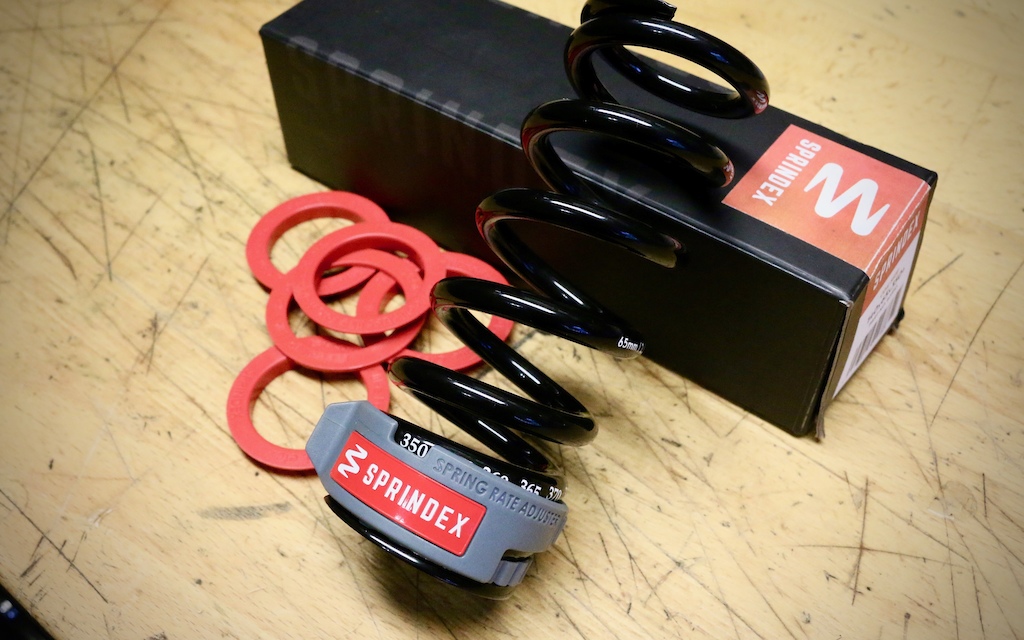

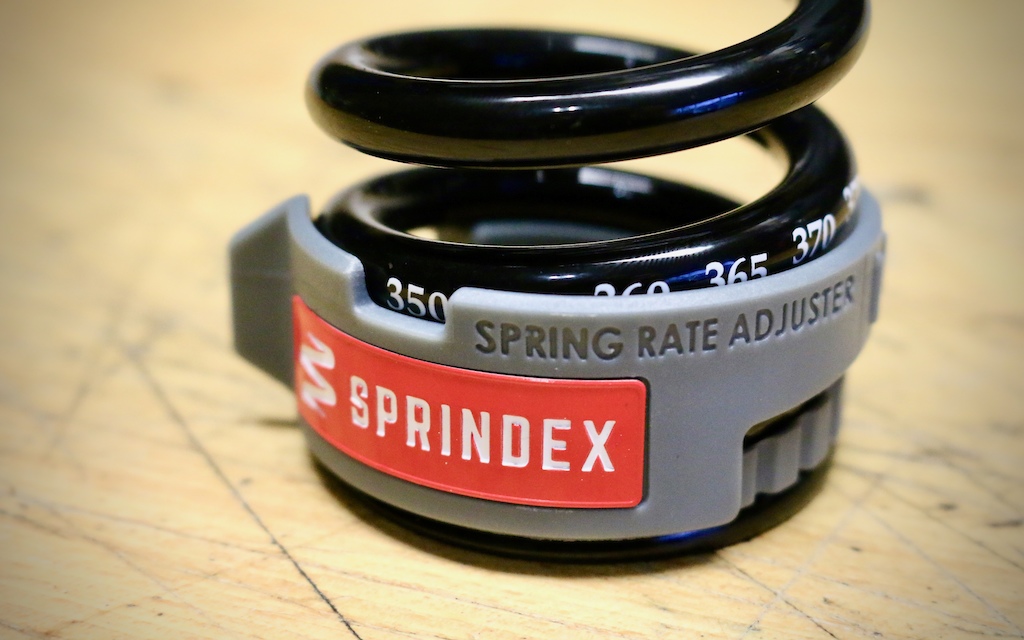

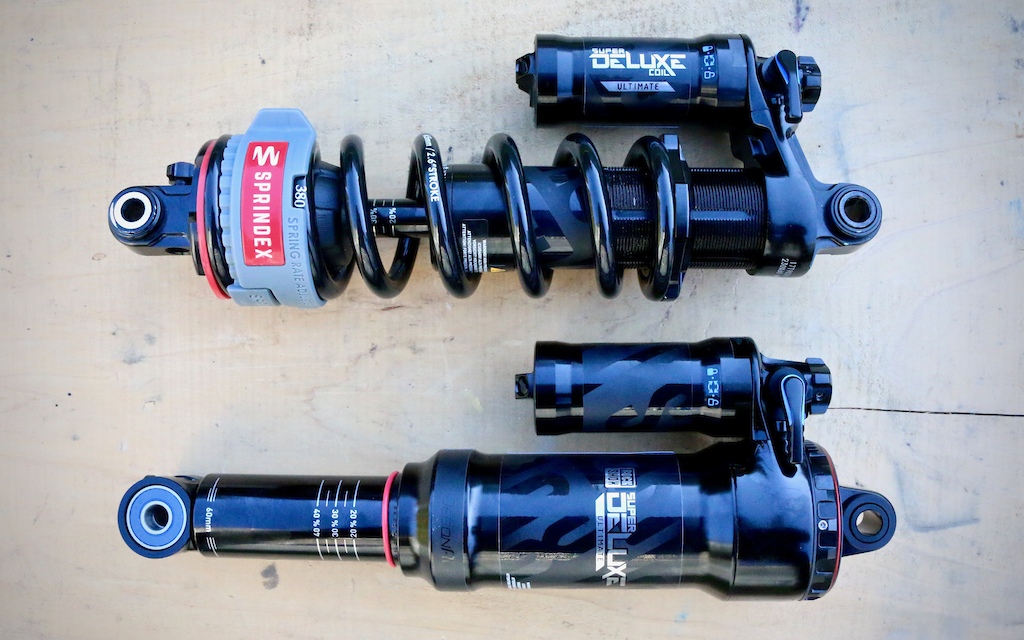
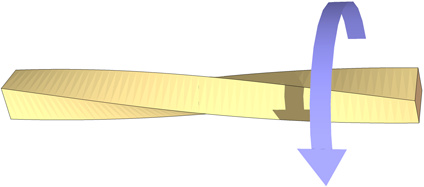
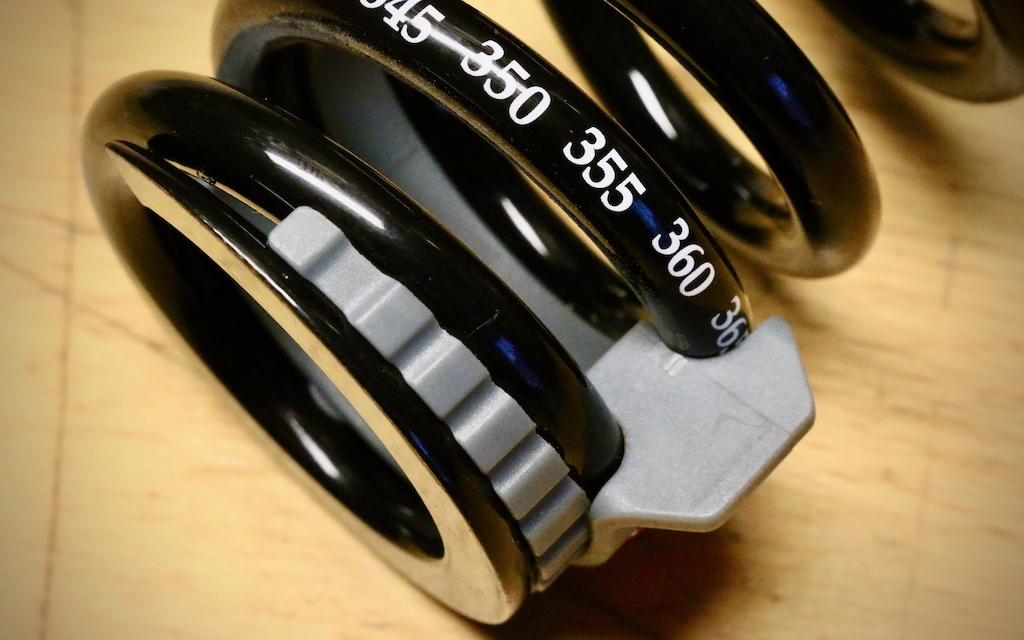
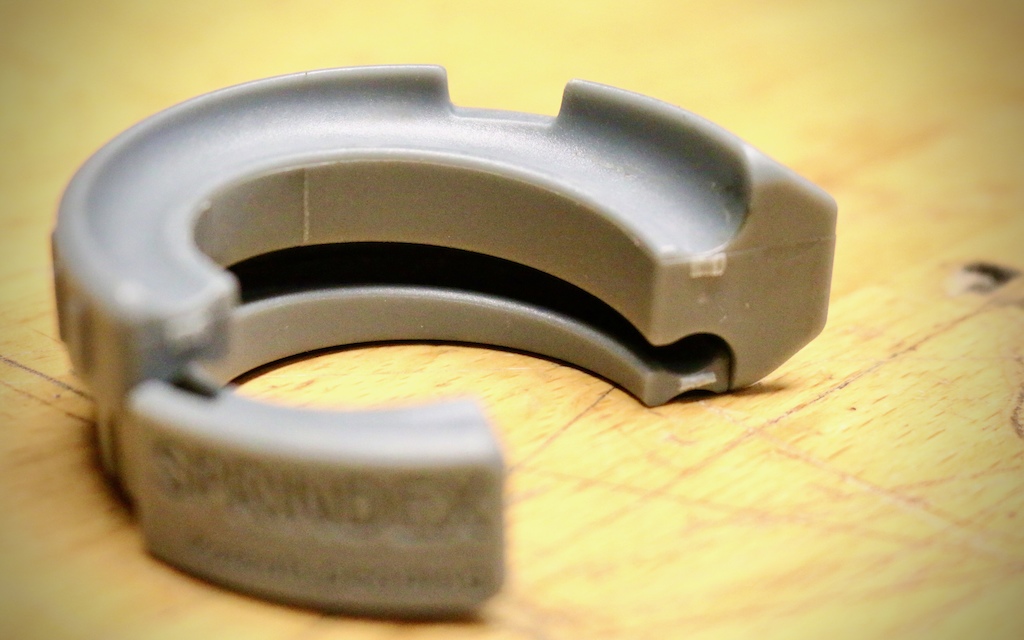
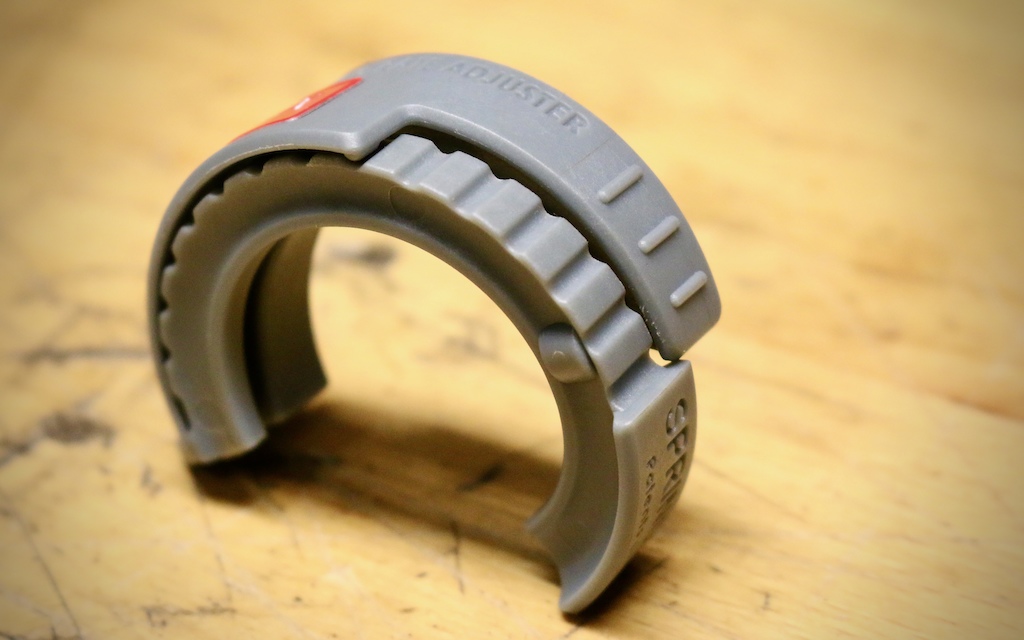
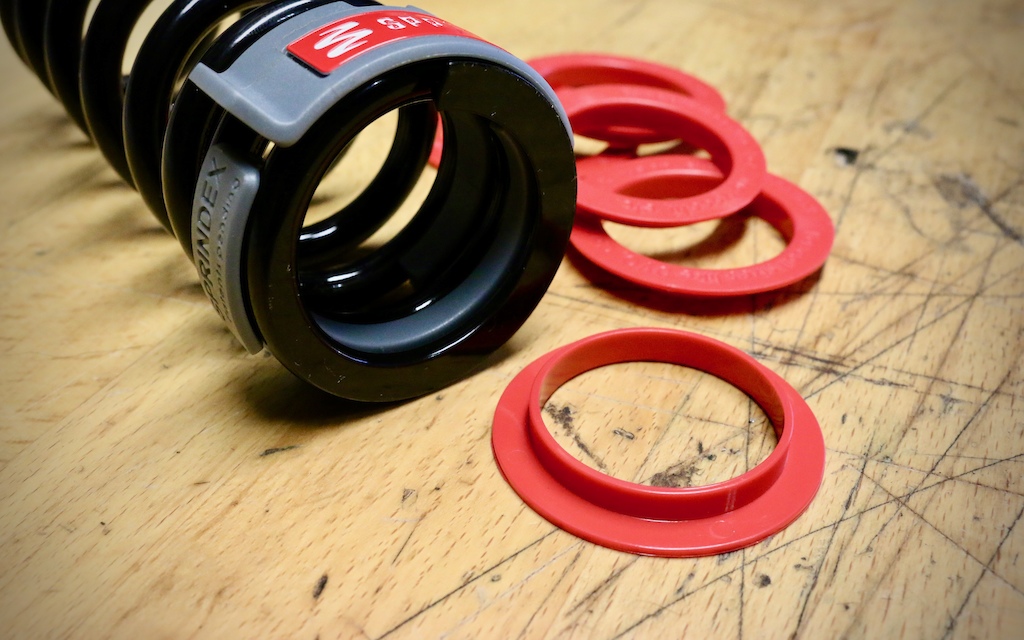
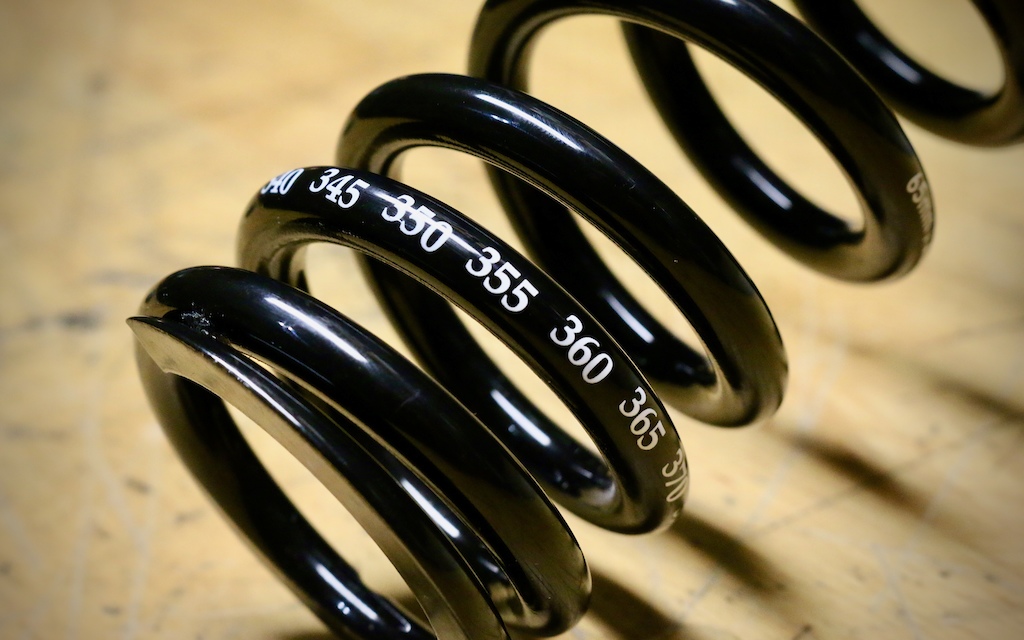
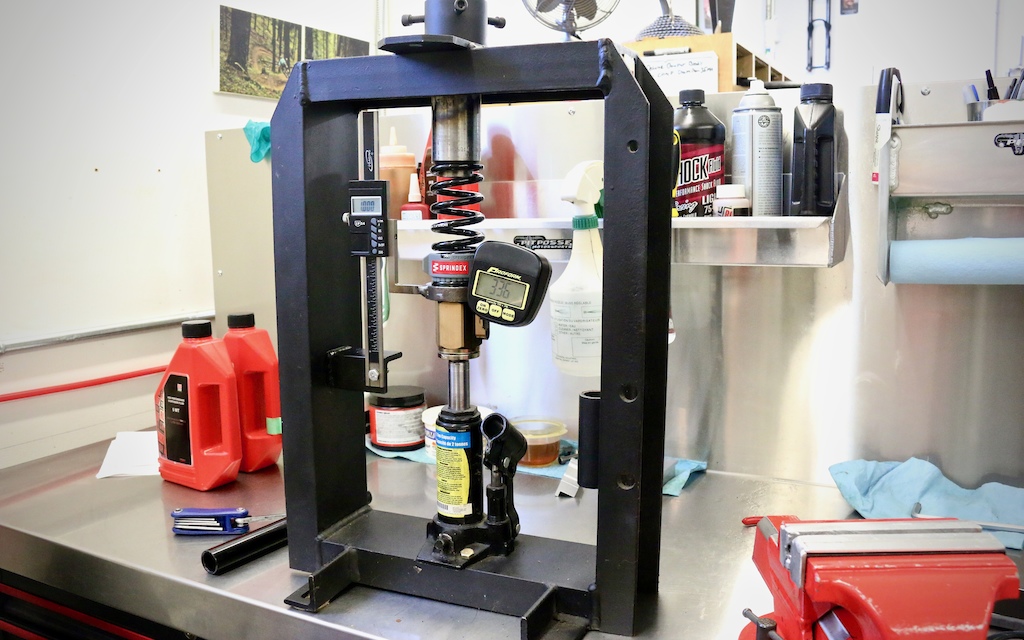
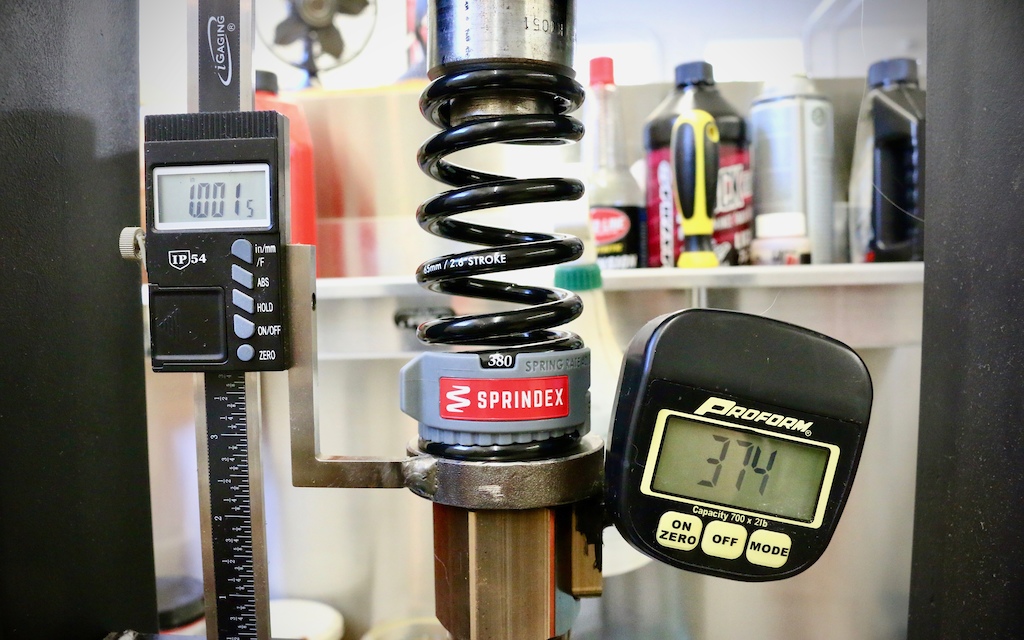
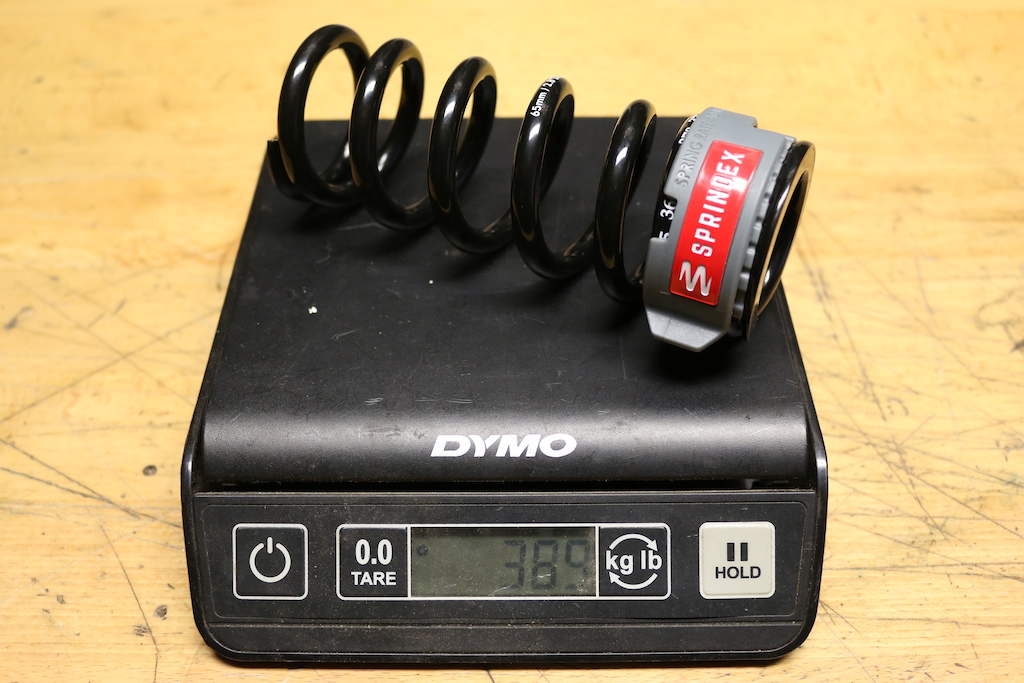
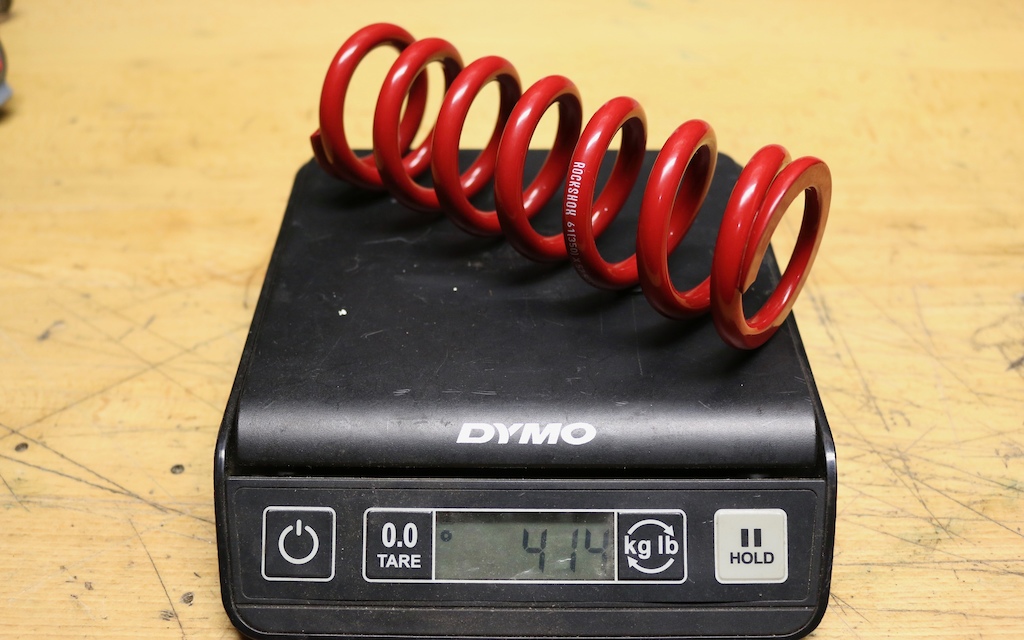
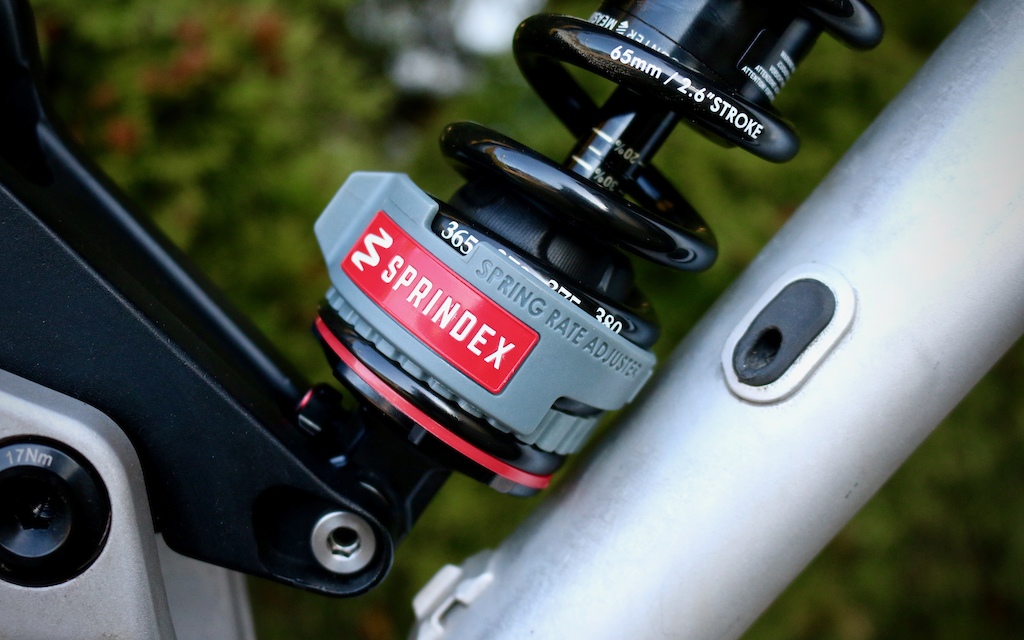

The accuracy of the spring doesn’t matter as much as achieving the right setup for you and your bike regardless of the number printed on the side
Within 0.57% accuracy at 340 w/ preload.
Within 0.83% at 350 w/preload
And ~1.6% at 380 w/ no preload.
This is just one spring tested but if this is typical these are really good numbers. This seems pretty cool to me and could let you get sag super dialed. Could possibly be trying this in the bear future.
You should call it the "Overeaters Chip"
@thenotoriousmic: supposedly none, the blast of air is coming out of the hose with the schrader valve closing off. Putting the hose on is a different thing though.
1. use a pump that can close off the valve before unscrewing, meaning you have 0 loss of pressure
2. design a better valve.
Since the valve is designed to multiple 100 psi (i wouldn't be surprised if it can hold 100+ bar as well) and is used in all manner of phase change cooling systems with temperatures going below -100°C and pressures being all over the place as well, it's supposedly also used in aircraft hydraulic systems, i don't think you can do much better than the ubiquitous schrader valve.
Plus, if you're worried about the amount of air leaking from the sock when pumping it, surely you pump it up according to ambient temperature as well? And adjust the pressure according to ambient pressure and temperature during the ride as well? Do you see where i'm going?
1. Read the damn article.
2. Compare pricing to other coil springs.
3. Remember to read the damn article next time.
Go check msrp for an SLS or Fox light spring.
Maybe I'm missing something, please correct me if I'm wrong, but aren't alot of bikes spec'd specifically with air shocks as they lack the progressiveness in their kinematics? I see how this gadget can adjust spring rate but fail to see where it makes up for being super linear..?
Either way this seems like a very cool little adjustment gadget and it is sort of amazing nobody has thought of this until now.
Throw coil on everything, then complain about how terribly it rides!
if you apply a low force , and have a big difference in rate , the first can eventually compress until it store enough force to move the second one.
in fact , that is use outside of the MTB worl , look at this : www.extremeshox.com/product/ext-tech-3r
if you take a 200lb spring and stack a 100lb spring common sense would let you think that you now have a 150lb spring - it is not the case. its takes a differential equation to calculate the resultant rate.
as mentioned above in motor sports they often use dual spring with a cross over ring. this setup is nice as it can control your initial small bump absorption then ramp up quickly once your off the top spring.
The smaller springs in that case are compressing first. They seem designed to have very soft initial spring rate for a small part of travel, not a ramp up at the end of travel.
Why are you talking about subjects you don’t seem to understand? The softer spring is not an isolated system and will be acting on the secondary coil as it compresses, which compresses the harder spring.
mrpbike.com/products/enduro-progressive-coil-springs
Progressive coils are just an expensive way of achieving what variable length bottom out bumpers already do.
some would say all of that is just a way around proper high speed compression damping.
It's not a differential equation to figure it out. Its the same equation as calculating electrical resistance of two resistors in parallel.
Req = 1/(1/R1 + 1/R2) or for your example
66.7lb/in = 1(1/200 + 1/100)
Two springs in series is softer than either of the two individual springs. It still works though as generally, you use a shorter spring specifically designed to coil bind (flat wire) for the softer rate. Once it reaches spring bind, only the higher rate spring is active.
"Progressive" springs essentially do the same thing. Some of the windings are closer together than the others. These windings bottom out on each other first, essentially "deactivating" those coils and the spring rate increases.
Most cars use progressive wound springs. If the spring is designed to operate in that manner, it's not really a problem. They typically have a softer sleeve around the coils that bind though to protect them from wearing off the corrosion coating.
The reason why there aren't many progressive springs is because there are different bike frames out there and it's hard (impossible) to make a spring that works for all of them. It's easier to use a "linear" spring and then a couple different bottom out bumper designs can be used to adjust progression. Push and Avalanche Racing both have different bottom out bumpers designs depending on how much progression is needed. They can also have material cut out of them to change the spring rate curve of the bumper.
encrypted-tbn0.gstatic.com/images?q=tbn:ANd9GcRzDAjdnv1yUA8fPrCTTBhgvpG5iqMYhSzbYNLJSNMal63DWyEMtQ&s
Also are there any other options for progressive springs besides MRP? My bike is a regressive single pivot but my ride style lends itself to a coil shock. Any thoughts or experience here?
www.bikeradar.com/reviews/components/rear-shocks/sprindex-adjustable-coil-spring-review
www.bikeradar.com/reviews/components/rear-shocks/sprindex-adjustable-coil-spring-review
Game changer.
But I agree with you that a single coil on the right shock, properly set up, would be all you would need.
I guess the point of this is you get some tunability at the shop and also people like to tinker. Also I had a coil on my previous bike which was set up for me at 72kg. Two years later I was 82kg and it was definitely too soft. I wanted to go up a spring but I was too stingy to buy one so I went with a bit more compression damping instead. This bad boy would have allowed me to just perform a little twist to compensate for all the chickens and creatine.
One more question. Will it be available in colours @pinkbike? A lot of people have to have that Fox SLS spring in orange to match their bike!
And nothing to fit a 57mm stroke shock, they're missing a big chunk of the upgrade market by limiting selection so heavily.
I'm saying a 142mm spring is too long for my shock.
P.S.
@mikelevy you do know you could just have put a weight on the spring and measured how far it is compressed to get the springrate?
(Weight/(uncompressed - compressed length))
Did you measure of the springrate change was consistent across the usable range of the spring?
It's fun theorizing about what curve I'd expect them to show but the proof is in actual physical measurements...
1 weight savings
2 adjustability
3 pedalling platform
4 cost savings (it came with the bike at time of purchase)
Besides, good bikes don't need switches, so it doesn't matter if it has a pedalling platform or not or a coil or air spring.
Depends on what performance you are talking about.
Preventing the bike from moving while you stand and smash the pedals? I'd say that's "pedal platform" which actually comes down to the damper, not the spring.
Coils maintain better traction due to less friction. I've climbed lots of stuff on a coil that I always loose traction on my air shock with. If anything, I felt like the coil had the most noticeable improvement while climbing.
With the small bump performance being more critical when climbing, having less seals that are all in an oil bath (damper circuit) as opposed to additional less well lubricated seals from the air spring will of course be only helpful.
While torsion springs have many advantages (low inertia, giving better suspension performance), they have a massive disadvantage in packaging. They are mainly used in race cars (even then not all of them) since there packaging is not such a big of an issue. They are integrated into the gearbox casing in the rear and the monocoque at the front.
The biggest problem with coils is their shaft diameters VS modern frames using yokes. It makes them a no no for many bikes, since the shafts just snap or at least keep developing play at the bushing.
It depends a lot on how the rear suspension linkages are designed. Some bikes just put a lot of side loads or twisting on the shock. then you get things like:
www.pinkbike.com/photo/17755119
www.pinkbike.com/photo/16387049
(pics from Jeffsy forum thread.)
Love ya
The RS Pike U-turn mechanism effectively does the same thing, increasing spring rate, but also shortening the spring.
“ Spring rate refers to the amount of weight that is needed to compress a spring one inch. If the rate of the spring is linear, its rate is not affected by the load that is put on the spring. For example, say you have a 200 lb. per inch spring - it will compress 1” when a 200 lb. load is placed onto the spring. If another 200 lbs. is put onto the spring, the spring will compress another inch. At this point the load on the spring is 400 lbs. The rate of the spring, however, remains constant at 200 lbs. per inch.”
“For example, Sprindex adjusted to 360 lb/in spring rate performs exactly the same as a custom made ordinary spring that has a 360 lb/in spring rate.”
(I'm going to hell.)
Plus, stiff mounting of the ends of the spring also causes spring deflection, it's just in a different shape (the equation to determine the amount of it uses different factors depending on the mounting conditions).
So you're trying to say by supporting it with a piece of plastic higher up in the winding it's not supported? And that a blockage is not a support? Can you please elaborate on that concept?
The tightly wound ends of a coil are also 'blocked' by your logic. Plus there are coil springs that are not ground on the end. Depending on the application, they work just fine. In most cars,t he supporting 'cup' is actually shaped in such a way to support a cut off end of the spring without any changes in winding pitch. So, kinda like what this does. And it works just fine.
So, if you want to make your point, please try again.
The 'open ended spring' you're mentioning for cars is also used in the rear of many cars, where there is no strut or shock going around it. Plus the ~15 mm of shaft diameter of the strut in the front of a McPhearson shock is nothing compared to ~100 mm of diameter of the spring going over it. If you want to support the spring in the middle, you need to have a fairly tightly fitting rod going through it (that way you get spring rub, like it happens on MTB shocks).
What i'm trying to say is that i fail to see the point how some grinding can make the spring more stable than supporting it directly on the coil, directly on the shape of it. Even more so when that support is higher up, making the coil shorter and effectively more stable.
My enduro bike with 14 stone of me on it runs a 380-430 and i’ll be towards the bottom.
I Fitted my sprindex at the weekend after buying blind thinking such a good idea - I can change my sag between 25-33% at each end of adjustment - absolutely perfect.
imo 10-20€/$/... would be a good spot. but who am i to judge.
I´m sorry - I think i got the concept of the product now. forget what i just said (yesterday´s me is a moron)
Once tooled up those plastic parts are dollars each. Could sell tons to all the coil spring riders out there
Adding air to a shock takes like 30 seconds before a ride. Easy. Using the standard air pressures you should be able to get pretty close on the first go. Mess with it a bit. Sag it.... etc. Spend a few minutes getting it set up and then you know your pressure. If after riding it you think it needs more or less you figure that out. Then you know your pressures and you just check them every now and again. Really shouldn't change much.
I think people get too stressed out about it. Air pressure is the easiest part of setting up a fork/shock.
www.peterverdone.com/springs-cause-its-spring
so you ride air sprung-bikes then?
So how does adding preload change the sensetivity of the coil?
And this isn't adding preload, it's reducing the number of active turns meaning that the lower portion of the spring cannot compress so the portion of the spring actually moving is shortened. Reducing the amount of coils that can compress will increase the amount of load required to compress the spring the same amount because those fewer coils will need to compress further to achieve the same overall compression.
No matter how much you preload a 400# spring, it's still going to require 400# to compress one inch. If you have 5 turns of coil on a spring and block one from moving, the other four will need to travel 25% further to achieve one inch of compression overall which raises the spring rate required to compress the spring by one inch...
But yes, this does not add preload, this removes active coils and changes the spring rate. I think you guys have a general misunderstanding here.
For dynamic systems you usually look at oscilations around the neutral (i.e. sag) point, so the preload will just move your zero a bit, but not change the dynamics of the system, if the weight and spring stiffness are the same.
You can take your weight, the leverage ratio of your bike, your desired sag, and determine what % of that initial 400lbs you'll need to preload into the spring to support your static weight at your desired sag. Preload is a fine tuning adjustment to dial in sag and provide negative travel for the suspension. This approach limits the number of coils moving forcing each individual coil to travel further in compressing one inch than they otherwise would, thereby increasing the force required.
For a practical example, think of it this way... a 150lb rider runs a 300lb spring. If he throws on a 30lb pack and rides, no amount of preload adjustment is actually going to increase his 300lb spring rate so his new 180lb rider weight is going blow through travel and bottom out regardless of whether his sag is reset correctly. But if his coil spring uses 6 turns and he blocks out one of them from moving forcing the other five to travel further, he'll increase his actual spring rate to the 360'ish range and be able to ride with proper suspension support throughout the travel.
I was just trying to clear up what you said about preload because it is wrong, at least missing some additional qualifiers and explanation...
"No matter how much you preload a 400# spring, it's still going to require 400# to compress one inch."
To compress a preloaded spring by one inch you need to apply the spring rate plus the preload force. Using our 400 lbs/in spring, with say 50 lbs preload, you'll need to apply 450 lbs to compress it by one inch, and 850 to compress it by two inches.
Is English your second language, is there another language I can explain it to you in that you'll have a better chance of understanding?
If you want to compress the spring a full inch compared to it's preloaded length, you'll need to apply the preload force plus the rated spring force. If you want to compress a preloaded spring you have to first overcome the preload force, otherwise it won't move at all.
Just going to clarify your last post for any sad reader who made it this far; "A 400lb spring will compress one inch [compared to it's unpreloaded length] with 400lbs placed on it... preload does not change that."
We're not "both correct"... All this shit about "unpreloaded length" is just you trying to avoid being wrong by doubling up on being stupid. Preload works by compressing the spring to fine tune your sag point, it doesn't change spring length or spring travel or spring rate. A spring being compressed 1/8" by preload does nothing to change how much load it requires to compress one inch.
Why the hell are we using inches and pounds???
Coil bind is bad. I learned the hard way snapping 2 springs before figuring out wtf was actually going on.
People should not voice their opinion about shit they know nothing about.
If it was bending, you would see "superlight carbon coil spring", as nothing competes with carbon in bending.
But you don't see "superlight carbon coil spring."
You don't see the writing moving, because the spring is rotating fractions of a degree.
It’s good for fine tuning between spring rates ( ie.400-500lbs springs )
Sorry it’s a gadget .
And I simplified it